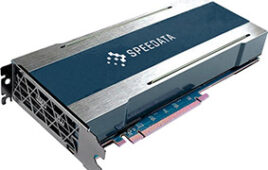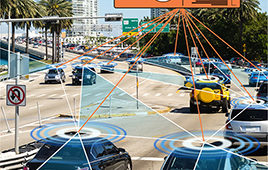Genome-wide Study of Human Stem Cells
A team of scientists from Singapore led by the Genome Institute of Singapore (GIS) and the Institute of Molecular and Cell Biology (IMCB), two biomedical research institutes of Singapore’s Agency of Science, Technology and Research (A*STAR), have discovered the most important genes in human embryonic stem cells (hESCs), a crucial breakthrough in discovering how human stem cells work. Their research, published in top scientific journal Nature, is the first ever genome-wide study of human stem cells on such a massive scale, and its results are crucial in understanding how stem cells may one day be used to treat debilitating conditions such as Parkinson’s disease and traumatic spinal injury.
GIS Senior Group Leader for Stem Cell and Development Biology and Associate Director for Biology Ng Huck Hui, and IMCB Principal Investigator Frederic Bard combined the strengths of their teams to investigate the 21,000 genes in the entire human genome to find those which regulate the two characteristic properties of hESCs – the capacity to turn into any type of cell in the human body (pluripotency), and the ability to retain that capacity indefinitely. Out of the several key genes they identified, a particular gene known as PRDM14 was discovered to make it easier to turn a type of human cell (fibroblasts) into pluripotent stem cells. The discoveries contribute to a fundamental understanding of the nature of stem cells and helps efforts to improve techniques to turn mature adult cells into hESCs.
In addition, the scientists found that PRDM14 played a key role in hESCs, but not in mouse ESCs. This significant new finding highlights the fundamental differences between stem cells from different species, and highlights the greater need to use human cells in stem cell research.
“Very little is known about the molecular machines that drive stem cell states or the transcriptional profiles of hESCs. Our study helps to build a better understanding of hESCs and this will help in the development of technologies to further the utilities of these cells such as their potential to be used for clinical and therapeutic applications,” said Ng. “Dr Bard’s scientific expertise was invaluable in helping us crack another piece of the stem cell puzzle. I definitely look forward to collaborating with him on more projects that aim to peel away the mysteries surrounding stem cells” he added.
Alan Colman, Executive Director of the Singapore Stem Cell Consortium, said, “Huck Hui Ng and his colleagues continue to keep Singapore at the top table of countries plundering the secrets of human embryonic stem cell regulation. This time they have deployed the first genome-wide functional screen to identify factors that maintain ‘stemness’ in these cells and yet again reveal major differences between mouse and human embryonic stem cells in the control of this important property.”
Senior Scientist at the Developmental & Stem Cell Biology Program, The Hospital for Sick Children, Janet Rossant added, “The unprecedented scale of this screen has added considerable new information to our understanding of pluripotency and will help efforts to improve reprogramming of adult cells.”
Professor Lee Eng Hin, Executive Director of the Biomedical Research Council, A*STAR, applauded the discovery and said, “This is an exemplar of a great cross institutional collaboration. The combined strength of stem cell and genomics experts has led to a great piece of world-class work. I hope to see more of such valuable partnerships in the future.”




